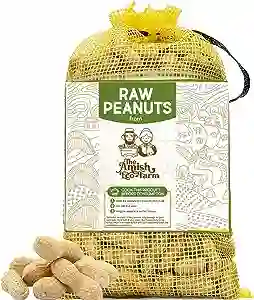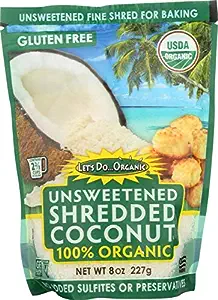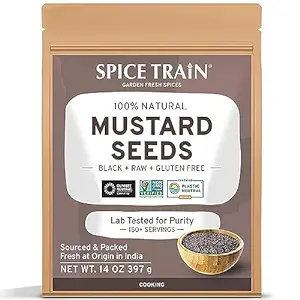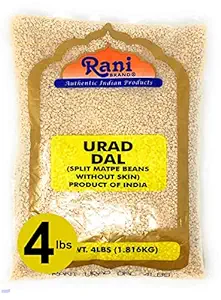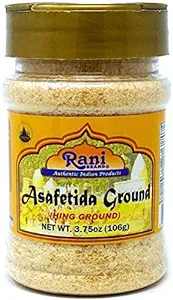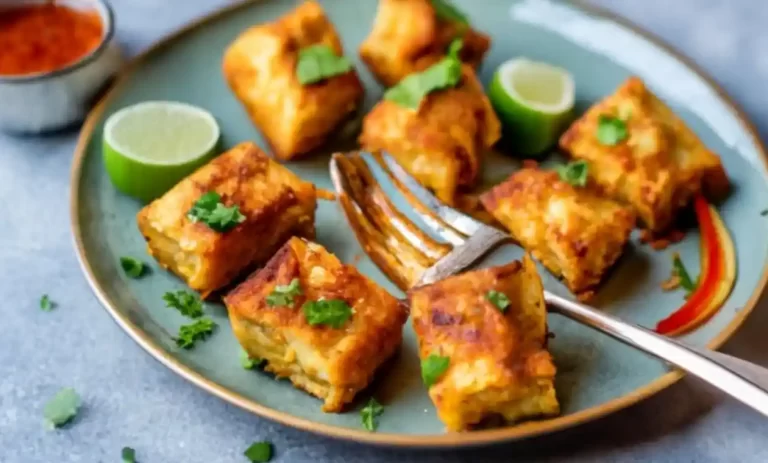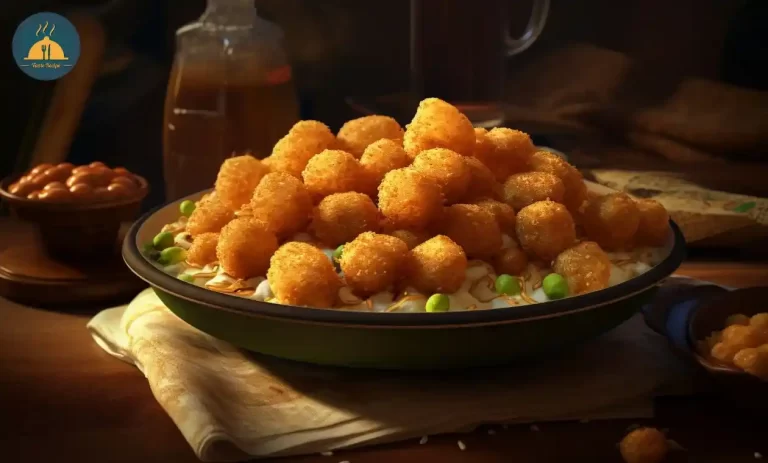Peanut Chutney Recipes – Classic, Spicy, Creamy & More
Craving Peanut Chutney? Try These Recipes!
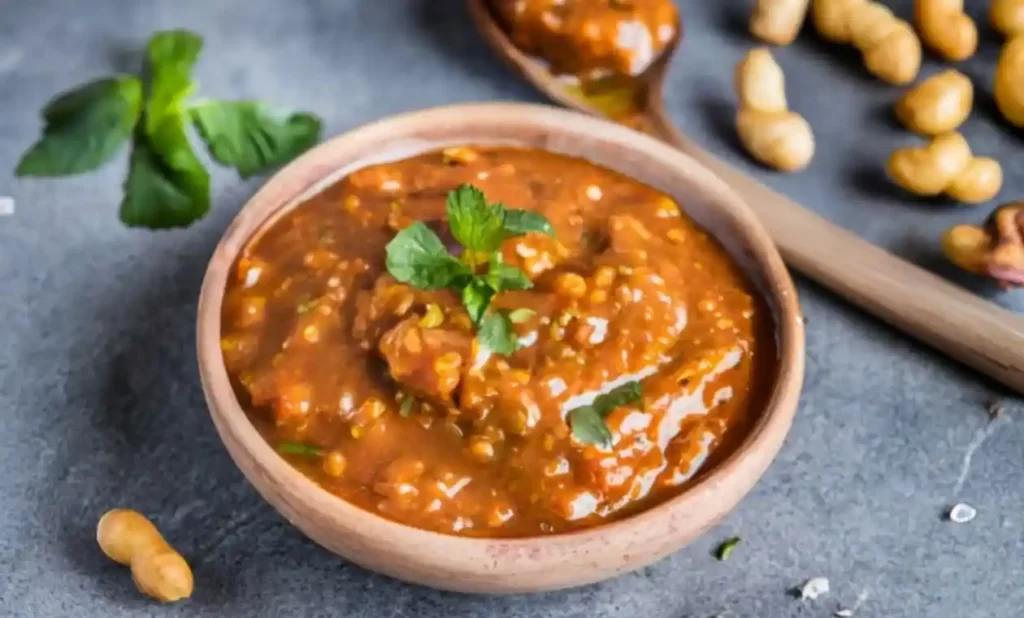
Peanut chutney, the unsung hero of condiments, has graced the tables of countless households for generations. This humble yet incredibly flavorful accompaniment deserves a moment in the spotlight, and that’s exactly what we’re here to do.
Popularity? You bet. This nutty delight boasts a widespread fan base that transcends borders. From the bustling streets of Mumbai to the serene kitchens of South India, peanut chutney has found its way into the hearts and plates of food enthusiasts worldwide.
Its versatility knows no bounds. Whether you’re a culinary novice looking for a simple dip or a seasoned chef seeking to elevate your dishes, peanut chutney is your trusty companion. It pairs flawlessly with dosas, idlis, parathas, and so much more. The variations are endless, offering a delightful surprise with every spoonful.
Now, let’s embark on a flavorful journey together. In this blog, we’ll unravel the mysteries of peanut chutney, exploring its rich history, diverse styles, and mouthwatering recipes. We’ll provide you with tips and tricks to master this culinary gem. Get ready to tantalize your taste buds and elevate your dining experience with the delectable world of peanut chutney. Hungry for knowledge and flavor? Let’s dive in!
Ingredients
Prepare to create your peanut chutney masterpiece by gathering these essential ingredients:
- Peanuts: At the heart of this chutney is the peanut itself, also known as groundnut. They impart a nutty richness and a subtle crunch to the blend.
- Fresh Coconut: Grated fresh coconut adds a luscious creaminess and a hint of tropical sweetness to the chutney.
- Green Chilies: These fiery green chilies bring the heat to your chutney. The quantity you use can be adjusted to your spice preference.
- Garlic Cloves: Garlic not only contributes its unique pungent flavor but also adds depth to the chutney’s taste.
- Tamarind Paste: Tamarind paste lends a tangy and slightly sour note, balancing the richness of the peanuts and coconut.
- Curry Leaves: Curry leaves infuse a distinct aromatic flavor, enhancing the overall taste of the chutney.
- Mustard Seeds: Mustard seeds, when tempered, create tiny explosions of flavor. They’re an essential part of the chutney seasoning.
- Urad Dal (Split Black Gram): Urad dal provides a nutty undertone and helps in achieving the chutney’s desired consistency.
- Asafoetida (Hing): A pinch of asafoetida enhances the chutney’s umami flavor, adding a subtle depth.
- Salt: Salt, to taste, balances the flavors and enhances the other ingredients.
Each of these ingredients plays a crucial role in creating the harmonious blend of flavors and textures that make peanut chutney a culinary delight. As we delve deeper into the world of peanut chutney, you’ll discover how these components come together to create a taste sensation that’s truly unforgettable.
Classic Peanut Chutney
Classic Peanut Chutney, an evergreen favorite in South Indian cuisine, embodies simplicity and robust flavors. It’s the embodiment of tradition, a timeless creation that has been gracing plates for generations.
Unique Characteristics:
Classic Peanut Chutney stands out for its:
- Nutty Richness: The core ingredient, peanuts, brings a delightful nuttiness that’s both satisfying and comforting.
- Subtle Heat: Green chilies provide a gentle, warming spiciness, making it accessible to all palates.
- Creamy Texture: Fresh coconut adds a velvety creaminess that balances the crunch of peanuts.
- Balanced Tang: Tamarind paste imparts a delicate tang, enhancing the overall flavor profile.
Ingredients:
- 1 cup roasted peanuts
- 1/2 cup fresh grated coconut
- 2-3 green chilies (adjust to taste)
- 2-3 garlic cloves
- Small piece of tamarind or 1 tsp tamarind paste
- Salt to taste
Instructions:
- Begin by dry roasting the peanuts until they turn slightly golden and release their nutty aroma. Allow them to cool.
- In a blender, combine the roasted peanuts, fresh coconut, green chilies, garlic, tamarind, and a pinch of salt.
- Blend the ingredients into a smooth paste, adding water as needed to achieve your desired consistency.
- Heat a tadka pan or small saucepan. Add a teaspoon of oil, followed by mustard seeds. Allow them to splutter.
- Add urad dal and curry leaves to the tadka pan. Sauté until the dal turns golden brown.
- Pour the tadka over the peanut chutney and mix well.
Classic Peanut Chutney has been a staple in South Indian cuisine for centuries. Its origins are deeply rooted in the culinary traditions of Tamil Nadu, Karnataka, and Andhra Pradesh. This chutney often accompanies dosas, idlis, and vadas, forming an integral part of a traditional South Indian breakfast.
A typical serving of Classic Peanut Chutney, approximately 2 tablespoons, contains around 60-80 calories, making it a nutritious and flavorful addition to your meal. Portion sizes can be adjusted based on personal preferences and dietary needs.
Spicy Peanut Chutney
Spicy Peanut Chutney is an exciting twist on the classic, designed for those who crave a bit more heat and zing in their chutney. This fiery variation takes the traditional peanut chutney up a notch.
Unique Characteristics:
Spicy Peanut Chutney is known for:
- Intense Heat: This chutney doesn’t hold back on spiciness. It’s for those who love a fiery kick in every bite.
- Complex Flavor: The heat is balanced with the nuttiness of peanuts and the richness of coconut, creating a harmonious blend of flavors.
- Versatility: While it’s an excellent accompaniment to dosas and idlis, its fiery nature makes it a superb condiment for many other dishes.
Ingredients:
- 1 cup roasted peanuts
- 1/2 cup fresh grated coconut
- 5-6 spicy green chilies (adjust to taste)
- 3-4 garlic cloves
- Small piece of tamarind or 1 tsp tamarind paste
- Salt to taste
Instructions:
- Begin by roasting the peanuts until they’re golden brown and fragrant. Allow them to cool.
- In a blender, combine the roasted peanuts, fresh coconut, spicy green chilies, garlic, tamarind, and a pinch of salt.
- Blend the ingredients into a smooth paste, adding water as needed to achieve your desired consistency.
- Heat a tadka pan or small saucepan. Add a teaspoon of oil, followed by mustard seeds. Allow them to splutter.
- Add urad dal and curry leaves to the tadka pan. Sauté until the dal turns golden brown.
- Pour the tadka over the spicy peanut chutney and mix well.
Spicy Peanut Chutney, while not as ancient as the classic version, has gained immense popularity in recent years. It caters to the modern palate that seeks bold and fiery flavors. It’s often served in homes, street-side stalls, and restaurants across South India.
A serving of Spicy Peanut Chutney, approximately 2 tablespoons, contains around 70-90 calories, making it a flavorful and invigorating addition to your meal. Adjust the portion size according to your heat tolerance and preference.
Creamy Peanut Chutney
Creamy Peanut Chutney is a luxurious variation of the classic peanut chutney. It’s for those who appreciate a velvety texture and a milder, nutty flavor with a touch of indulgence.
Unique Characteristics:
Creamy Peanut Chutney stands out with:
- Silky Texture: The addition of yogurt or curd creates a silky-smooth consistency that glides over your palate.
- Balanced Flavor: It offers a harmonious blend of nuttiness from peanuts, creaminess from yogurt, and a gentle tang from tamarind.
- Mild Spice: Creamy Peanut Chutney is less spicy compared to its counterparts, making it an excellent choice for those who prefer a gentler heat.
Ingredients:
- 1 cup roasted peanuts
- 1/2 cup fresh grated coconut
- 1/2 cup plain yogurt or curd
- 2-3 green chilies (adjust to taste)
- 2-3 garlic cloves
- Small piece of tamarind or 1 tsp tamarind paste
- Salt to taste
Instructions
- Begin by dry roasting the peanuts until they turn golden and emit a nutty aroma. Allow them to cool.
- In a blender, combine the roasted peanuts, fresh coconut, green chilies, garlic, tamarind, and a pinch of salt.
- Blend these ingredients into a coarse mixture.
- Add plain yogurt or curd to the mixture and blend again until it transforms into a smooth and creamy texture.
- Heat a tadka pan or small saucepan. Add a teaspoon of oil, followed by mustard seeds. Allow them to splutter.
- Add urad dal and curry leaves to the tadka pan. Sauté until the dal turns golden brown.
- Pour the tadka over the creamy peanut chutney and mix well.
Creamy Peanut Chutney has emerged as a modern variation in response to changing tastes. It offers a delightful contrast to the traditional versions and is often served alongside dosas, idlis, and even as a dip for snacks.
A serving of Creamy Peanut Chutney, approximately 2 tablespoons, contains around 70-90 calories, making it a satisfying and creamy addition to your meal. Adjust the portion size as per your preference for richness and creaminess.
Taste Recipe Special Version
At “Taste Recipe,” we take pride in our unique and signature version of Peanut Chutney. Our Taste Recipe Special Version is a culinary masterpiece crafted with love and creativity. It’s not just a chutney; it’s a flavor journey that promises to tantalize your taste buds like never before.
Our Taste Recipe Special Version of Peanut Chutney is a testament to innovation and a deep appreciation for flavors. Here’s what makes it stand out:
- Exquisite Ingredients: We carefully select the finest peanuts, the freshest coconut, and a blend of spices that are a well-guarded secret. Each ingredient is chosen for its quality and flavor.
- Balanced Complexity: Our special version strikes a harmonious balance between the nuttiness of peanuts, the creaminess of coconut, the spiciness of chilies, and the tanginess of tamarind. It’s a complex symphony of tastes that dance on your palate.
- Texture Magic: We’ve mastered the art of achieving the perfect texture. It’s neither too thick nor too runny, just right to coat your favorite dishes or be savored as a dip.
- Versatile Pairing: Our Taste Recipe Special Version isn’t limited to a specific dish; it elevates everything it accompanies. Whether it’s a dosa, idli, vada, or even a simple sandwich, it transforms the ordinary into the extraordinary.
Ingredients:
- Premium roasted peanuts
- Freshly grated coconut
- A blend of hand-picked spices
- A touch of aromatic herbs
Instructions:
- It all begins with the finest ingredients, roasted to perfection to unlock their full flavor potential.
- Our blend of spices, carefully measured, is added to create a tantalizing spice mix.
- The roasted peanuts and coconut join this mix, and the blending process begins. It’s an art that requires precision to achieve the ideal consistency.
- A touch of aromatic herbs is added to heighten the sensory experience.
- The result? A Taste Recipe Special Version that’s not just a chutney but a culinary masterpiece.
Our Taste Recipe Special Version is more than a condiment; it’s a testament to our passion for food. It’s a promise of flavor, quality, and a taste experience that will leave you craving for more. As you explore the world of peanut chutney, make sure to savor this unique creation from “Taste Recipe” – a celebration of flavors, love, and creativity in every bite.
Our Recommended Ingredients
Peanuts
Peanuts, nature’s protein-packed gems, add a delightful nutty crunch to your chutney. They are versatile and nutritious, making them a pantry essential.
Grated Coconut
Freshly grated coconut brings creamy richness to your chutney. Its sweet, tropical flavor balances the spiciness and enhances the overall taste.
Mustard Seeds
Mustard seeds, when tempered, unleash bursts of flavor in your chutney. They add a unique zing and depth to the condiment.
Urad Dal (Split Black Gram)
Urad dal, the unsung hero, provides a nutty undertone and helps achieve the perfect chutney consistency. It’s a staple in South Indian cuisine.
Asafoetida
Asafoetida, commonly known as hing, enhances the umami flavor of your chutney. A pinch of this spice adds depth and aroma to the condiment.
Tips and Recommendations
Creating the perfect Peanut Chutney requires not just the right ingredients but also some culinary finesse. Here, we offer you valuable tips, creative variations, and serving suggestions to elevate your Peanut Chutney experience.
Helpful Tips and Techniques:
- Roasting Perfection: Roast your peanuts until they turn golden and release their nutty aroma. This step is crucial for enhancing the flavor of your chutney.
- Tamarind Balance: Adjust the amount of tamarind based on your preference for tanginess. A little goes a long way, so start with a small piece or a small spoonful of tamarind paste.
- Spice Control: Control the level of spiciness by varying the number of green chilies. Remove the seeds for a milder heat or keep them for an extra kick.
- Consistency Matters: Achieving the right consistency is key. Add water gradually while blending to avoid making the chutney too thin.
- Tempering Technique: The tadka (tempering) with mustard seeds, urad dal, and curry leaves adds a burst of flavor. Ensure the mustard seeds splutter and the dal turns golden brown.
Variations and Substitutions:
- Vegan Twist: To make your chutney vegan, substitute yogurt with coconut milk or a dairy-free yogurt alternative in creamy versions.
- Nut Allergy-Friendly: For those with nut allergies, consider sunflower seeds or roasted gram (pottukadalai) as an alternative to peanuts.
- Gluten-Free: Peanut Chutney is naturally gluten-free. Just ensure that the ingredients you use, such as tamarind paste, are certified gluten-free if needed.
Serving, Presentation, and Garnishing:
- Traditional Pairing: Serve Peanut Chutney with dosas, idlis, or vadas for an authentic South Indian breakfast experience.
- Sandwich Spread: Use it as a flavorful spread for sandwiches or wraps. It adds a unique twist to your everyday lunch.
- Dip Delight: Peanut Chutney makes an excellent dip for vegetable sticks, pita bread, or even as a dip for chips at parties.
- Garnish Grace: Elevate the visual appeal with a garnish of fresh curry leaves, grated coconut, or a drizzle of seasoned oil (tadka) on top.
- Chutney Fusion: Experiment with fusion dishes by using Peanut Chutney as a sauce for pasta, rice bowls, or as a marinade for grilled vegetables or meats.
- Storage Savvy: Store leftover chutney in an airtight container in the refrigerator. It stays fresh for a few days and can be used as a flavorful condiment.
By following these tips, exploring variations, and getting creative with serving and presentation, you’ll master the art of Peanut Chutney and discover its incredible versatility. Whether you’re a novice cook or a seasoned chef, these recommendations will help you savor the rich and diverse world of Peanut Chutney.
In Crux
In this culinary journey through the world of Peanut Chutney, we’ve uncovered a treasure trove of flavors and traditions. Let’s take a moment to recap the key points that make Peanut Chutney truly exceptional:
- Versatility: Peanut Chutney is a versatile condiment that can elevate a wide range of dishes, from South Indian classics like dosas and idlis to fusion creations like sandwiches and pasta.
- Unique Styles: We explored three distinct styles of Peanut Chutney – the classic, the spicy, and the creamy. Each style offers a unique flavor profile and caters to different taste preferences.
- Craftsmanship: Creating the perfect Peanut Chutney requires attention to detail, from roasting peanuts to balancing spices and achieving the desired consistency.
- Cultural Significance: Peanut Chutney has deep cultural roots, especially in South Indian cuisine, where it has been cherished for generations.
We encourage you to embark on your own Peanut Chutney adventure. Experiment with the recipes, tweak the spice levels, and discover your personal favorite. Don’t forget to share your culinary creations and experiences with us; we’d love to hear your stories and see your delicious renditions.
As you savor the rich, nutty, and flavorful world of Peanut Chutney, you’re not just enjoying a condiment – you’re embracing a culinary tradition that has stood the test of time. So, grab your ingredients, get creative, and let your taste buds dance to the delightful tune of Peanut Chutney. Happy cooking!

